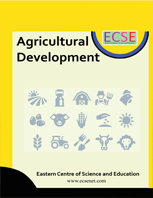Use of Two Types of Bokashi and their Effect on Tomato Fruit Quality Variables
DOI:
https://doi.org/10.55220/25766740.v10i4.400Keywords:
°Brix, firmness, Organic fertilizar, Postharvest, Weight loss.Abstract
Soil is the support and reservoir of nutrients. Excessive use of chemical fertilisers has led to its degradation, so modern agriculture has turned towards the incorporation of organic fertilisers. Organic fertiliser known as bokashi incorporates organic matter and nutrients into the soil. Hence, it has been reported that organic fertilisation effectively promotes plant growth and reproduction and can increase fruit quality. The aim of this study has been to apply two types of bokashi during tomato crop growth and to evaluate their effect on fruit quality variables. Initially, fertilisers were made and then applied to the soil. The applied treatments consisted of: T1: Bokashi added with bovine blood; T2: traditional Bokashi and T3: Control. Saladette tomato seedlings were transplanted, and thirty fruits were collected at random at harvest time; the following variables were measured: weight, polar diameter (PD), equatorial diameter (ED), percentage weight loss (%WL), °Brix, pH, titratable acidity, firmness and color. Results show better firmness and lower titratable acidity (TA) at T1; no significant differences were observed between treatments in the pH and °Brix variables; the highest color index (CI) was obtained with the T1 treatment, and no differences were observed in weight loss between treatments during the first five days of storage. Finally, it is concluded that the addition of bokashi promotes bigger fruits, does not influence the weight loss variable during the first five days of storage and does not negatively affect the quality of the fruit.






